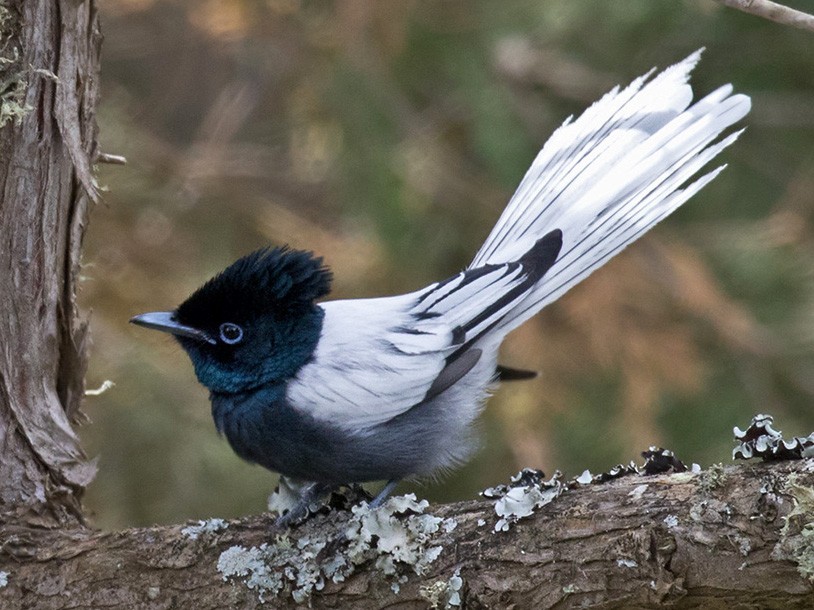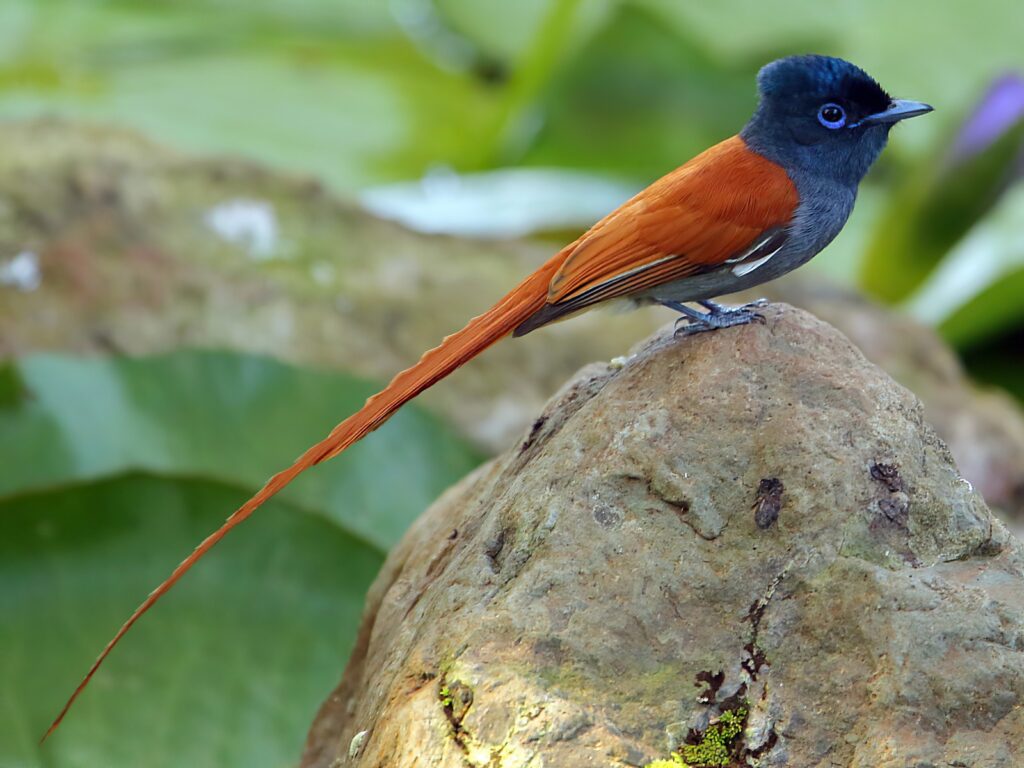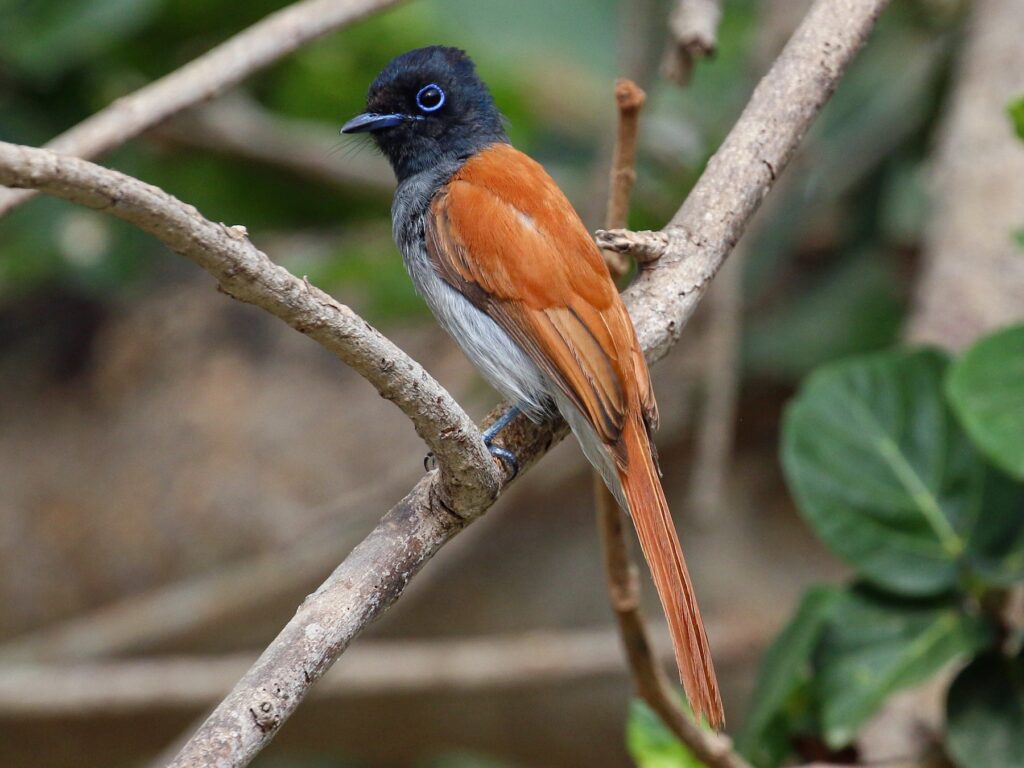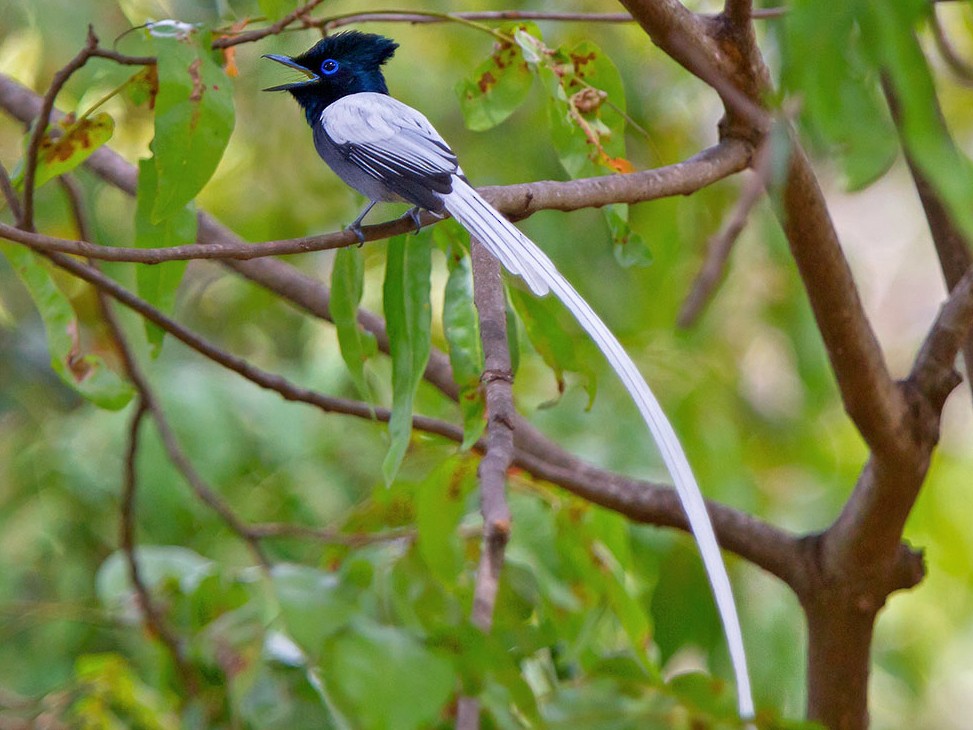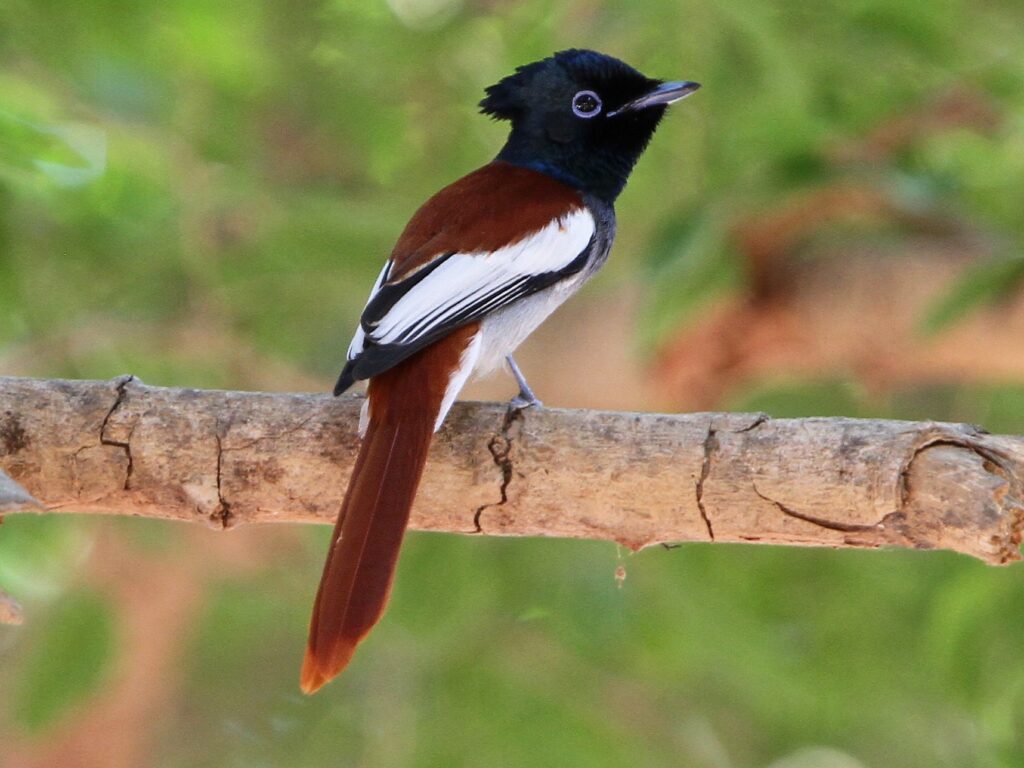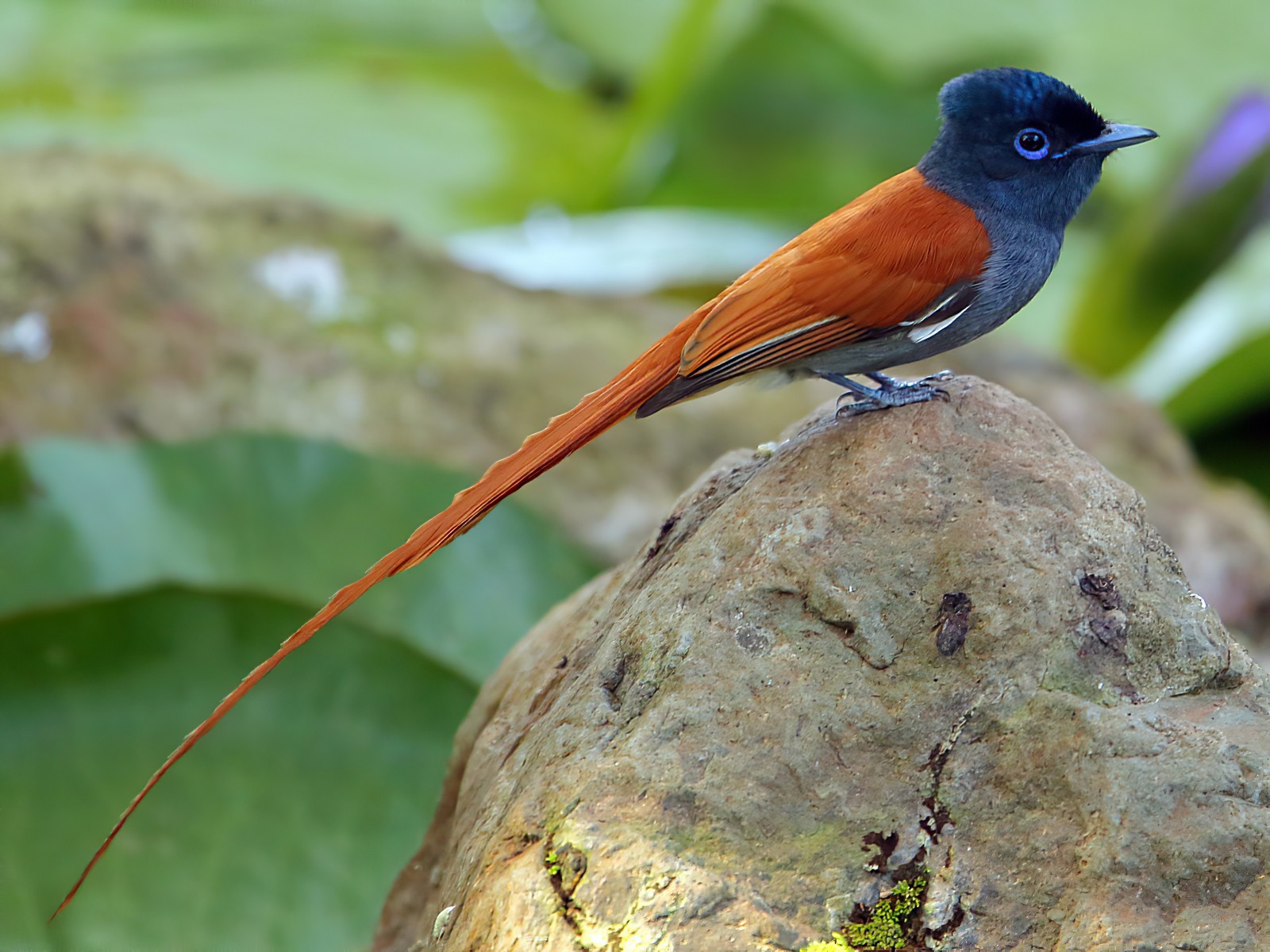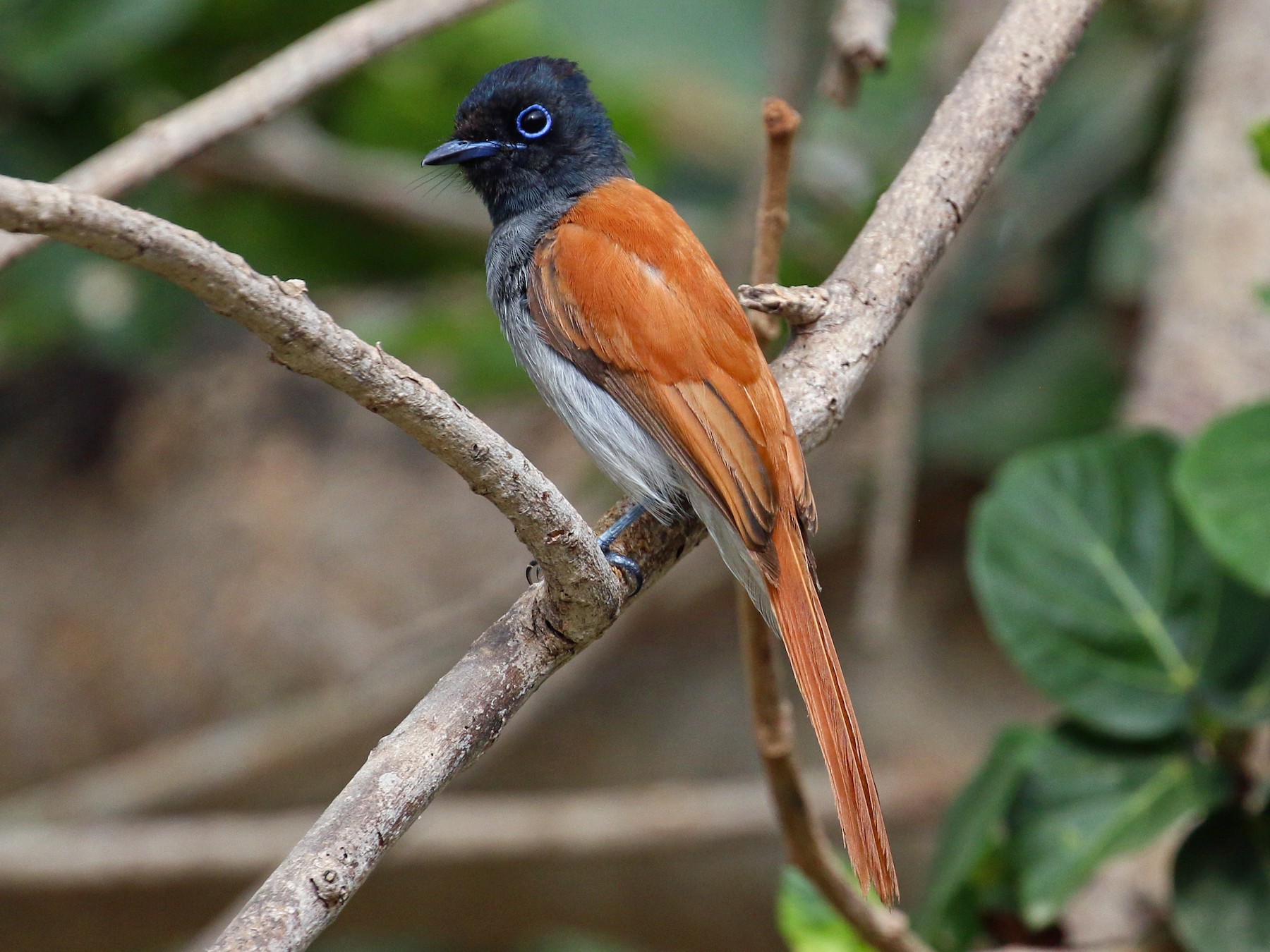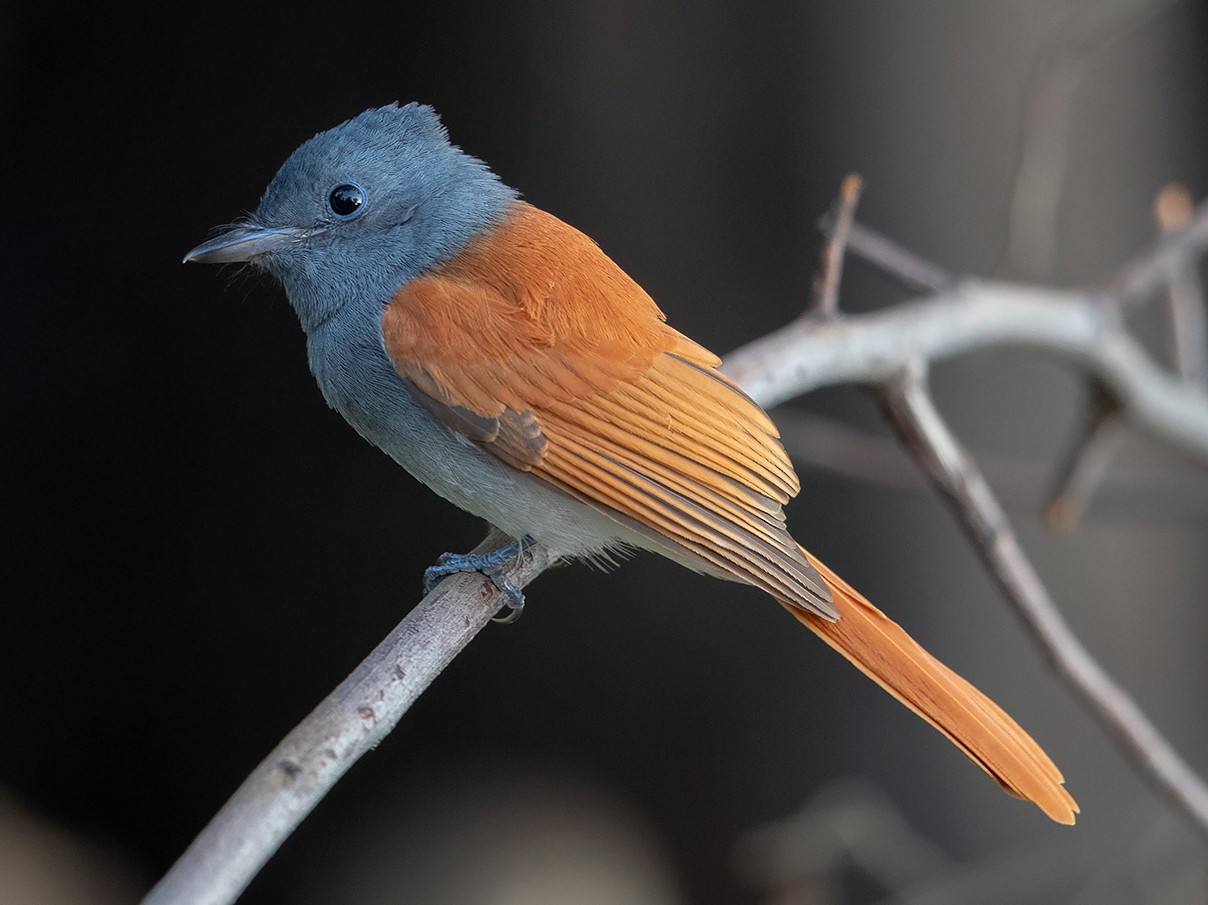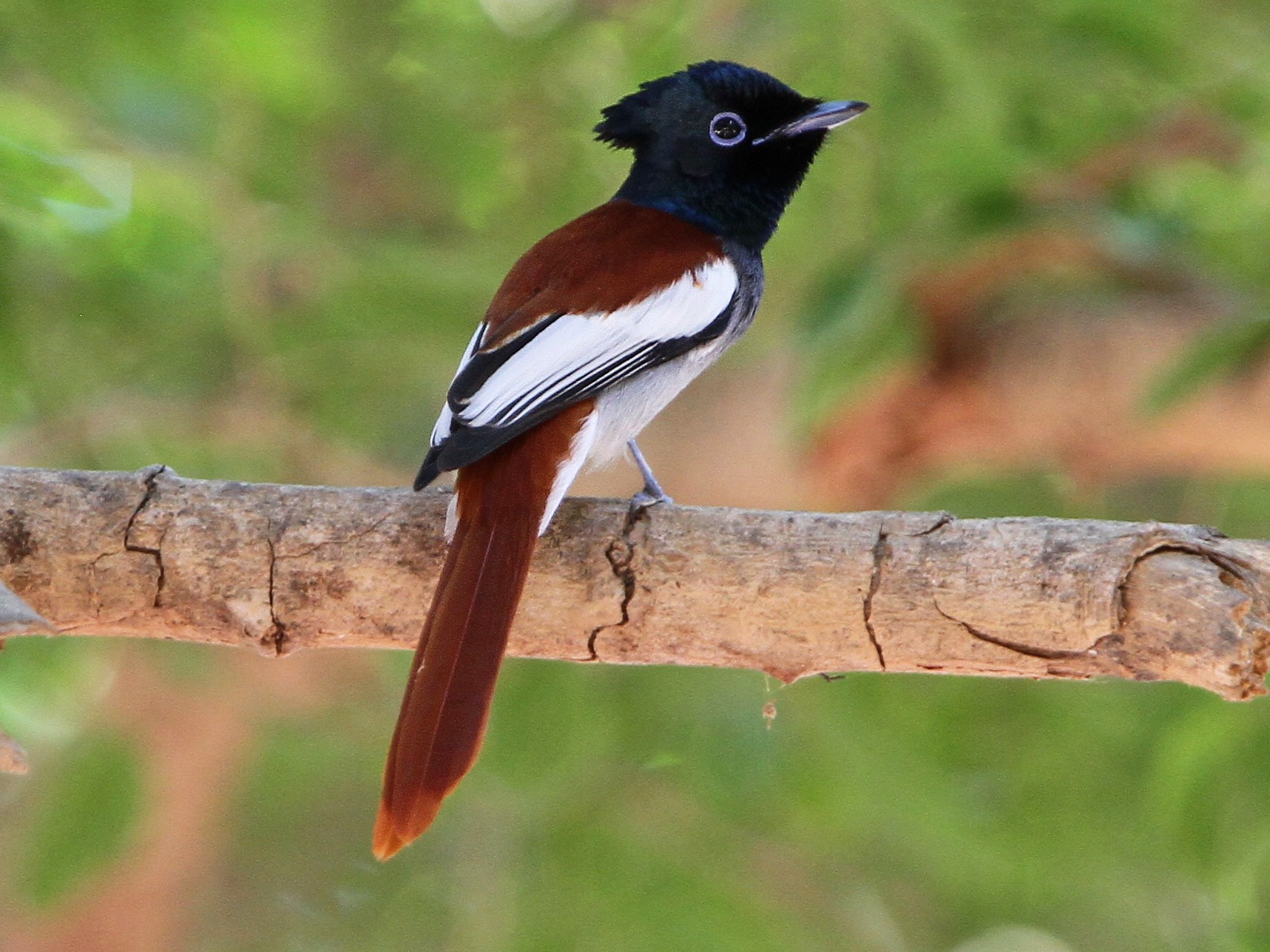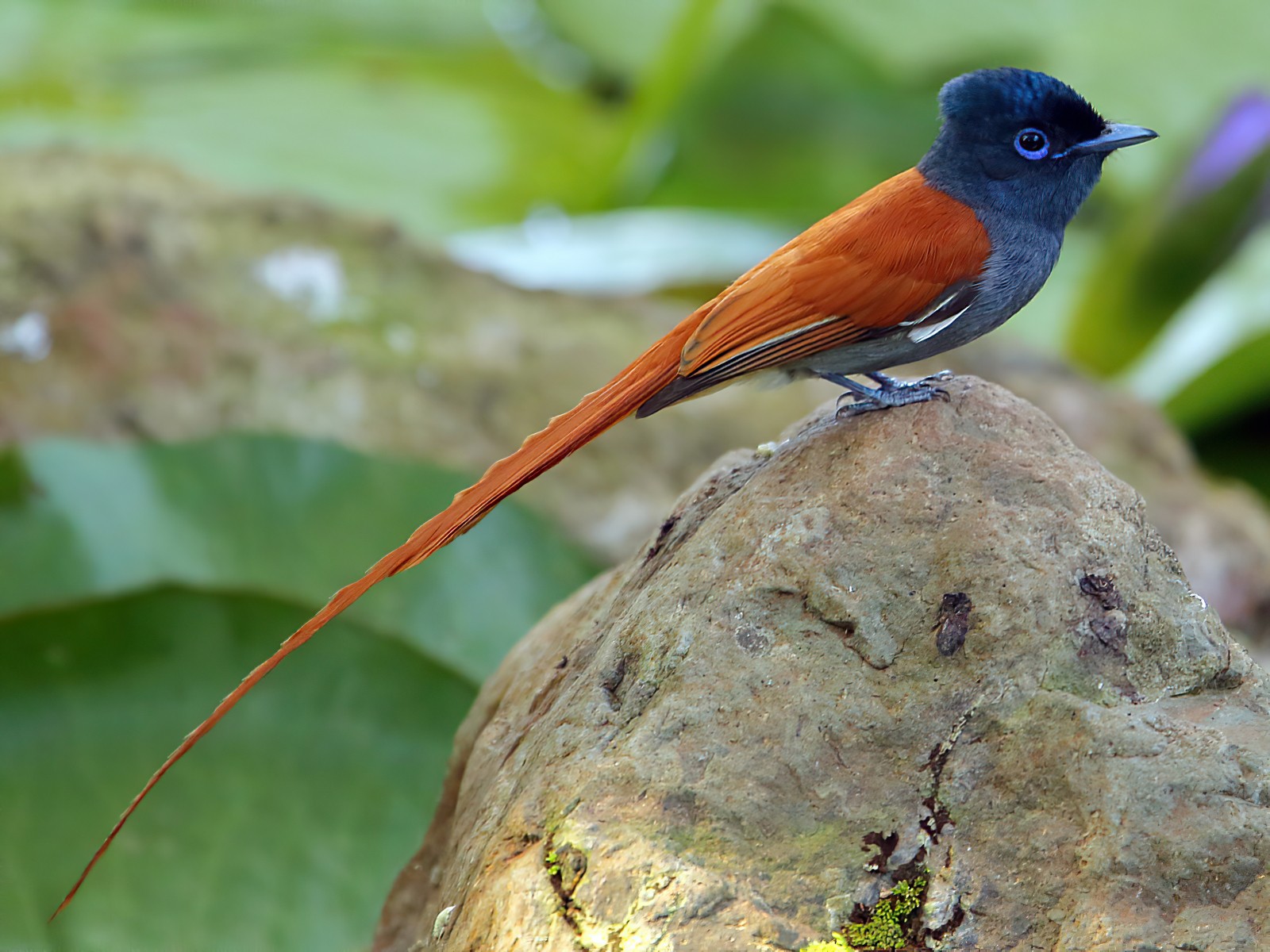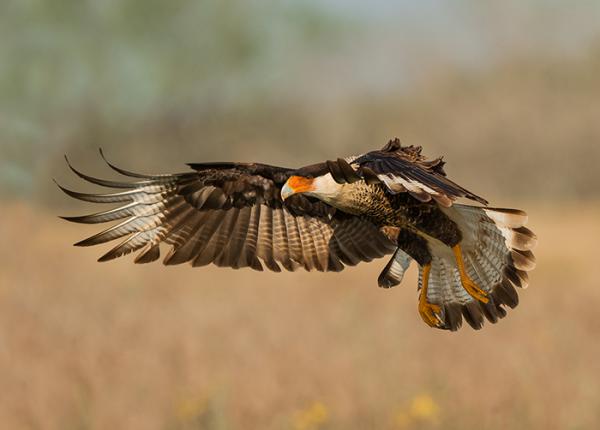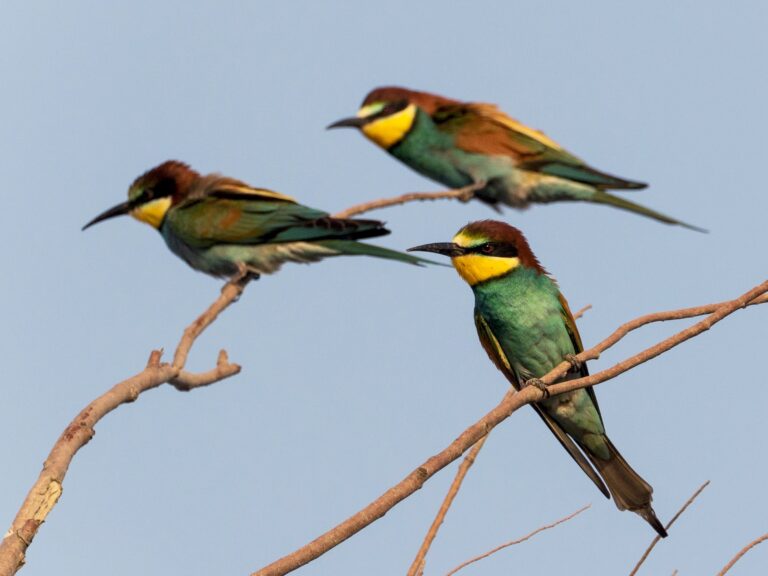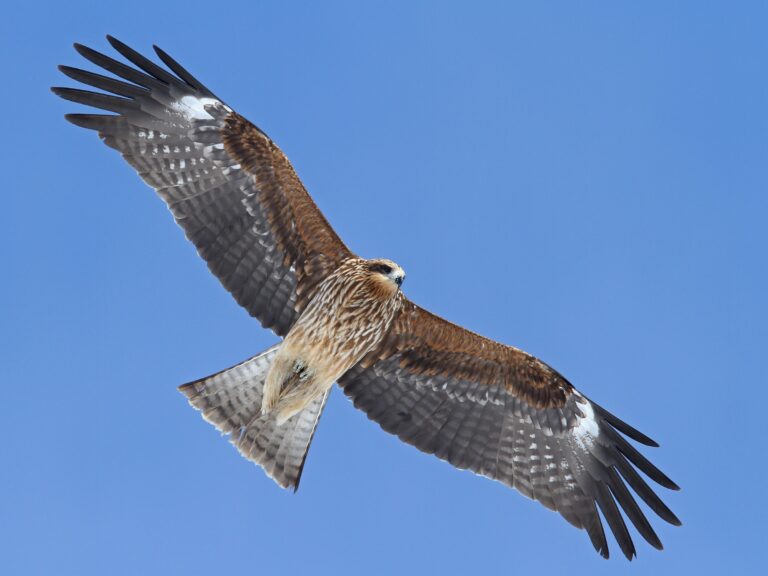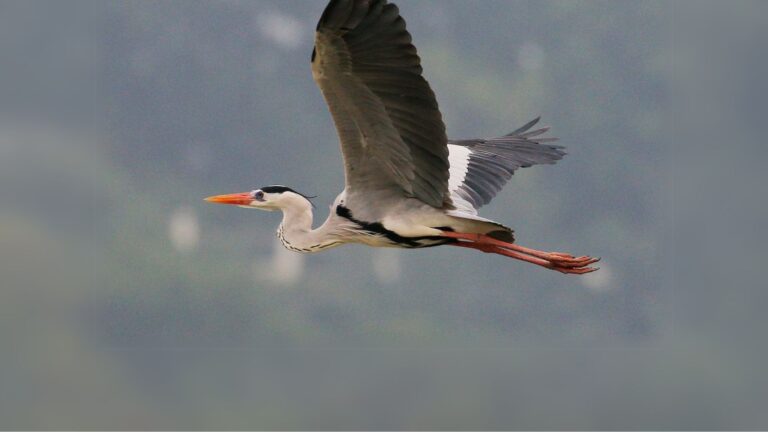African Paradise-Flycatcher Discover the Enchanting Beauty and Unique Behaviors of This Stunning Bird
Discover the Enchanting Beauty and Unique Behaviors of This Stunning Bird
The African Paradise-Flycatcher grabs your attention right away with those long, flowing tail feathers and its bold, lively colors. This bird stands out in African forests and woodlands, catching the eye of birdwatchers and even folks just out for a walk.
Watch it dart among the trees, chasing insects with a kind of elegance that’s hard to ignore. Its movements and plumage really make it pop against the green backdrop.
It belongs to the monarch flycatcher family. There are several subspecies, each with slight differences in color and size.
The African Paradise-Flycatcher prefers tall, shady trees but adapts surprisingly well to gardens. If you’re curious about how they build nests and behave, you might check out observations from Victoria Falls.
Key Takeaways
- The African Paradise-Flycatcher stands out thanks to its gorgeous tail and vivid colors.
- It thrives in a variety of wooded habitats across Africa and adjusts well to change.
- Its feeding and breeding habits fascinate bird watchers and researchers alike.
Taxonomy and Classification
This bird’s long tail and splashy colors make it easy to spot. It’s part of a fascinating bird family and comes in several forms across Africa.
Scientific Name and Family
Its scientific name is Terpsiphone viridis. It belongs to the Monarchidae family, which people usually call the monarch flycatchers.
These birds are small and mostly eat insects. You’ll find them in forests, woodlands, and even gardens.
The African Paradise-Flycatcher is the most widespread of its family in Africa. It’s closely related to other paradise-flycatchers, like the Asian paradise-flycatcher (Terpsiphone paradisi), but this one lives only in Africa.
Subspecies and Morphs
There are several subspecies spread out across Africa. They might look a bit different from each other, but they’re all Terpsiphone viridis.
This species also puts on quite a show with its color morphs. Most have chestnut bodies and blue-black heads, but some are nearly all black, which sometimes confuses people who see similar species like the Black Paradise Flycatcher.
Scientists use things like tail length, body color, and location to tell subspecies and morphs apart. These differences can be subtle or pretty obvious, depending on the bird.
Physical Characteristics
The African Paradise-Flycatcher’s look is really something special. Its colors, tail feathers, and the difference between males and young birds make it easy to pick out.
Distinctive Plumage
These birds wear a blend of rich colors that change depending on where they live and, well, just the individual bird’s style. Rusty chestnut, black, white, and blue are the most common shades.
Males usually have deep chestnut bodies, a glossy black head, and a bright blue ring around the eyes and bill. In some places, you’ll see males that are mostly white with bold black markings.
Females and young birds don’t show off as much color. Their feathers are more muted—think dull chestnut, gray, or brown—which helps them blend in and avoid predators.
Both sexes share that glossy blue bill and eye-ring. These birds molt once a year, swapping out old feathers for fresh ones.
Their color patterns help them attract mates and hide from threats in thick forests or open woods, as research on East African birds points out.
Tail Feathers and Long Tail Streamers
The adult male’s long tail feathers—those “streamers”—are just wild. Sometimes they’re twice as long as the bird’s body.
When the bird flies, those streamers ripple behind like ribbons, making the male really stand out. That’s not something you see every day.
Females and young birds have much shorter, straighter tails. The long streamers help males during courtship, though they probably make them more visible to predators, too.
The tail’s design also helps with balance as the birds dart through dense branches. If you’re interested in regional differences, check out studies on migration patterns.
Sexual Dimorphism: Adult Males and Young Birds
African Paradise-Flycatchers really show off when it comes to sexual dimorphism. Adult males have those crazy long tail streamers and brighter, flashier colors, especially on their heads and bodies.
The blue eye-ring and bill stand out more in males, too. Females, by contrast, keep things subtle with shorter tails and softer colors like brown, gray, and pale chestnut.
Young birds look a lot like females—no long tail streamers, lots of camouflage, and not much flash. Their first molt might bring some color changes, but the real transformation happens when young males grow up.
Spotting the difference between adult males, females, and young birds is pretty straightforward if you’re out birding or checking nests, as studies on flycatcher breeding describe.
Habitat and Range
You’ll find the African Paradise-Flycatcher in forests and woodlands all over Sub-Saharan Africa. Its range and knack for adapting have helped it thrive in lots of places.
Preferred Environments
This bird likes spots with plenty of cover and food. Moist forests, riverine woodlands, and thick lowland forests with dense canopies are favorites.
It also does fine in dry forests, acacia thickets, and along the edges of clearings. You can spot it in open savanna with scattered trees, and sometimes right near people.
Gardens, parks, and even big plantations can attract these birds. They go where the insects are, especially flying ones—that’s what keeps them going.
They’re found at all sorts of elevations, from sea level up into the uplands.
Geographical Distribution
Across Sub-Saharan Africa, these birds are pretty common. They show up from Kenya and Ethiopia west to Senegal and Gambia, and south into South Africa, Namibia, Botswana, and Zimbabwe.
Their range stretches across both east and west Africa. They fit in just as well in humid coastal areas as they do inland where it’s drier.
A few even make it to offshore islands. Some birds move around with the seasons, chasing food as it becomes available. For more on where they hang out, see research on foraging patterns of South African flycatchers.
Adaptation to Changing Conditions
This species adapts well, thanks to its flexible diet and habitat choices. When forests get cleared, they move into secondary growth, new woodland, or even big plantations if there are enough trees.
That adaptability keeps them going where more picky birds struggle. In some places, you’ll find them nesting in gardens, on farm edges, or in city parks.
Their ability to use both moist and dry habitats makes them less vulnerable to drought or weather swings. While some birds in their family, like the Seychelles Black Paradise-Flycatcher, face big threats, the African Paradise-Flycatcher’s versatility is a big reason for its success.
Feeding Habits and Diet
African Paradise-Flycatchers eat mostly insects, and they’ve got a few clever ways to catch them. Their menu changes with their environment, but it’s heavy on termites, moths, and beetles.
Insectivorous Behavior
These birds are true insect specialists. They spend the day hunting small insects for food.
You’ll often see them working the edges of forests, woodlands, and gardens where bugs are plentiful. They adapt their foraging as the seasons change and different insects appear.
When termites swarm, they don’t miss the opportunity—there’s a feast to be had. Their insect-eating habits help control local bug populations and play an important role in the ecosystem.
Diet Composition
Their diet is mostly insects—no surprise there. They go after termites, moths, butterflies, beetles, and flies.
Now and then, they’ll eat other small invertebrates if insects run low. They like soft-bodied insects and flying prey they can snatch in midair.
Here’s a quick look at what they eat:
| Insect Type | Examples | Notes |
|---|---|---|
| Termites | Swarmers | Eaten during mass flights |
| Moths | Various species | Prefer soft-bodied types |
| Butterflies | Small to medium species | Caught in flight |
| Beetles | Soft and hard | Found on leaves or bark |
They tend to avoid prey that’s too big or tough to digest. It’s a practical, efficient way to keep themselves well-fed.
Hunting Techniques
African Paradise-Flycatchers hunt in a few different ways. The most common is “hawking,” where the bird perches and then bursts into flight, grabbing insects right out of the air.
They also use “gleaning,” picking insects from leaves and bark while hovering or sitting for just a moment. Their long tails and agile wings make chasing bugs in the air look easy.
You’ll often see them hovering near foliage, peering for hidden prey. Compared to other flycatchers, these birds spend more time hovering as they forage.
Research on foraging patterns backs this up, showing they actively switch up their hunting style depending on what bugs are around.
Breeding and Behavior
African Paradise-Flycatchers really come alive during the breeding season. Their bright colors, clever nest-building, and social calls make them stand out in African forests and woodlands.
Courtship Displays
When it’s time to impress, the male shows off his long tail and flashy plumage. He fans his tail, dips, and makes short flights to catch a female’s eye.
He’ll even feed her small insects as part of the show. Males sing loudly and use dramatic body movements to warn off rivals and charm potential mates.
These displays aren’t just about color—they’re about showing stamina and agility too. Notes on breeding behavior mention males sometimes chase away other males from their territory.
Tail movements, display flights, and sharing food all play into their courtship.
Reproduction and Nesting
Breeding pairs team up to build a small, cup-shaped nest. You’ll usually spot these hanging from a thin branch.
Both parents gather spider webs, bark, and grass to weave a sturdy home. The female lays two or three eggs, and the parents take turns incubating.
Once the chicks hatch, both bring food to the nest, often catching insects mid-air. They feed their young many times a day.
They choose nest sites carefully, trying to keep predators at bay. Pairs may defend their nests from other birds and intruders, determined to keep their chicks safe.
If you want more details, check out the breeding of a Paradise Flycatcher.
Vocalizations and Social Interactions
African Paradise-Flycatchers get pretty noisy, especially during breeding season. They use sharp calls and musical whistles to talk, warn rivals, and let each other know about threats.
In groups, they call back and forth to keep in touch while feeding or moving around. Sometimes you can hear their calls echoing far through the forest.
Their calls help mark territory and keep other flycatchers away. Socially, these birds can be both peaceful and feisty.
Males get territorial, chasing away other males with loud calls and quick flights. Their vocal activity is a big part of how they hold their ground in the woodland community.
Frequently Asked Questions
African Paradise-Flycatchers always catch the eye with their looks and quirky habits. They build distinctive nests, show striking differences between males and females, and stick to specific habitats across Africa.
What are the differences between male and female African Paradise-Flycatchers?
Males usually sport much longer tail feathers—sometimes twice the length of their bodies. Their colors are brighter, with rich chestnut and black tones.
Females tend to be smaller, with shorter tails and duller, more muted browns. There’s just less contrast overall.
What type of vocalizations can one expect from an African Paradise-Flycatcher?
Expect a range of sounds, from a sharp “tswee” note to more melodic phrases. Males often sing during courtship or to mark territory.
Contact calls are softer and less complex, mostly for staying in touch with a mate or chicks. Research on their calls describes these subtle differences.
What does the African Paradise-Flycatcher typically use to construct its nest?
They build cup-shaped nests using fine materials like grass, tiny twigs, and spider webs. These nests are usually tucked away in tree branches to hide from predators.
Some studies note their nests look a lot like those of other small flycatchers (breeding details).
What constitutes the diet of an African Paradise-Flycatcher?
They mostly eat insects, catching them mid-air or plucking them off leaves and bark. Flies, beetles, and caterpillars make up the bulk of their meals.
Sometimes they hunt near big animals, grabbing bugs that get stirred up and are easier to catch (facultative cleaning).
What is the average size of an African Paradise-Flycatcher?
Most measure between 17 and 20 centimeters from beak to tail. Males’ long tail feathers can stretch their length to around 30 centimeters.
Females are shorter overall, mostly because their tails aren’t as long.
What are the key aspects of the African Paradise-Flycatcher’s preferred habitat?
African Paradise-Flycatchers mostly hang out in moist woodlands, along riverbanks, and inside forests. They seem to really like dense, leafy spots for nesting and hunting.
If you look around African nature reserves, you’ll notice them wherever there’s enough tree cover and plenty of insects to eat. It almost feels like they just know where the good spots are (habitat and presence).
